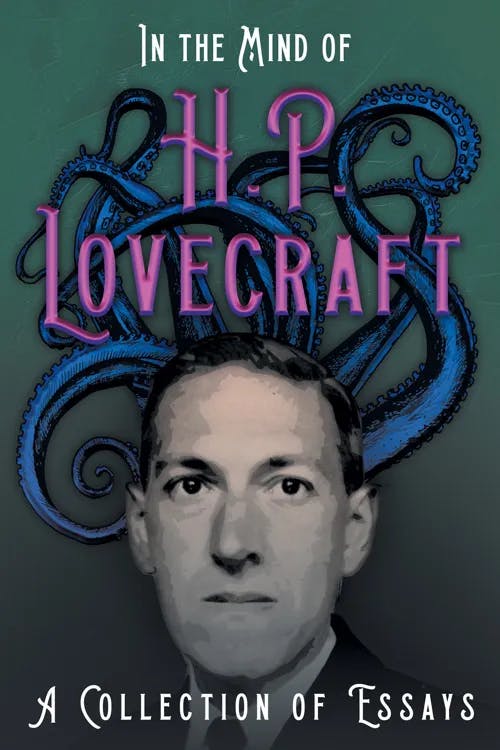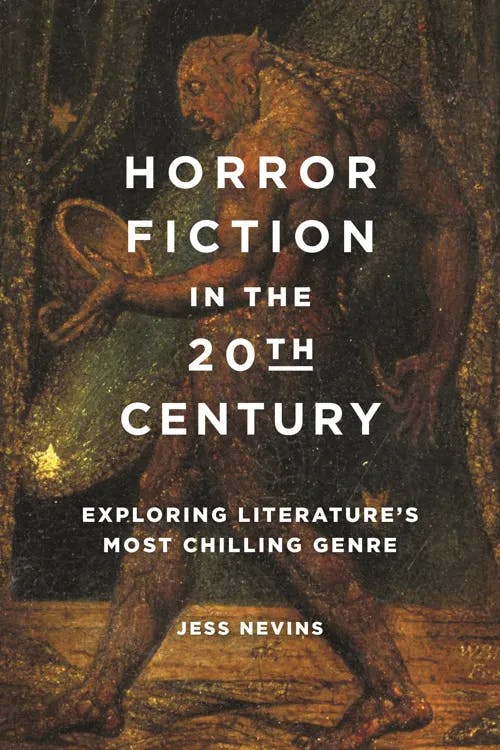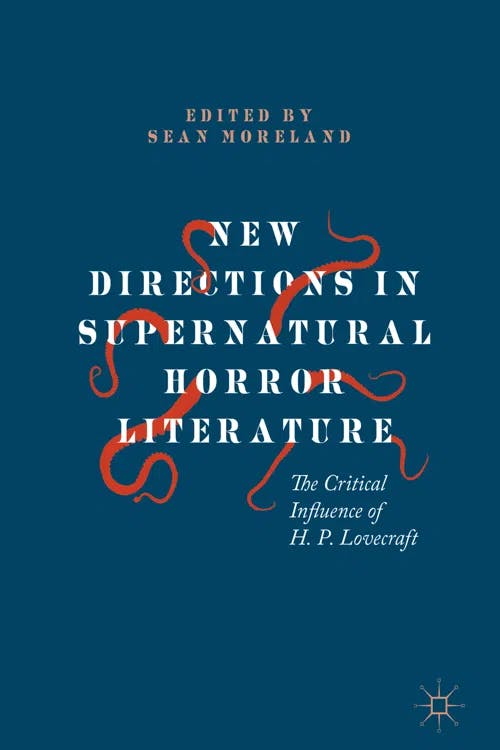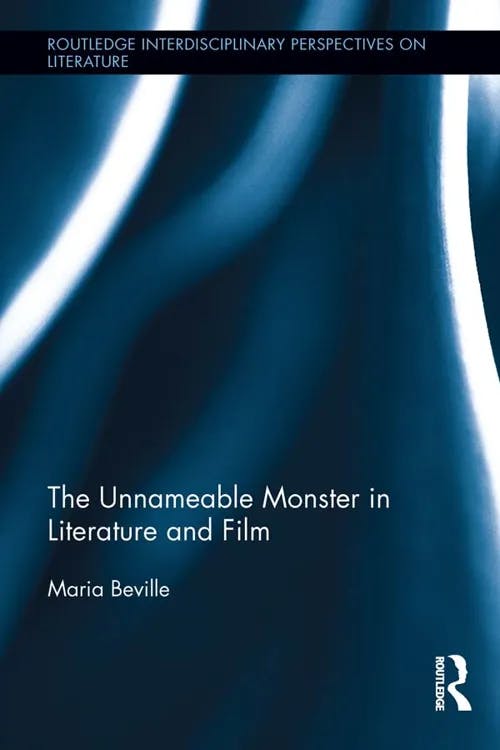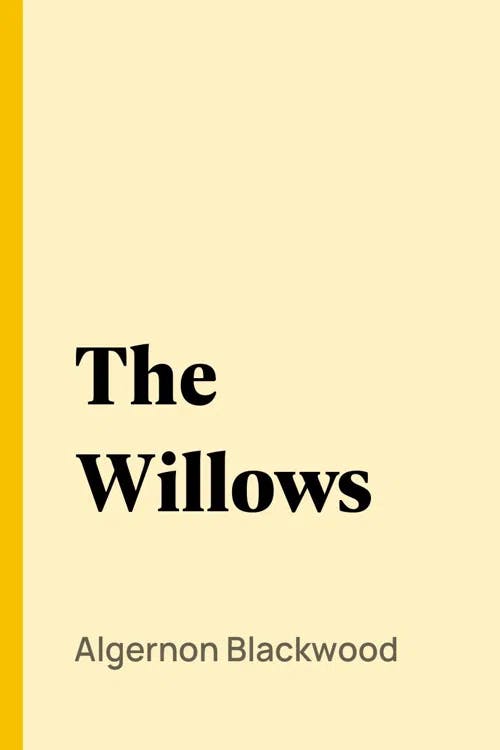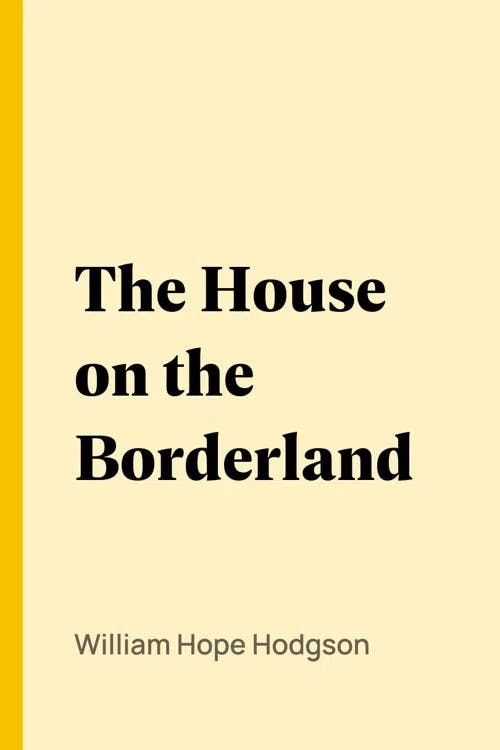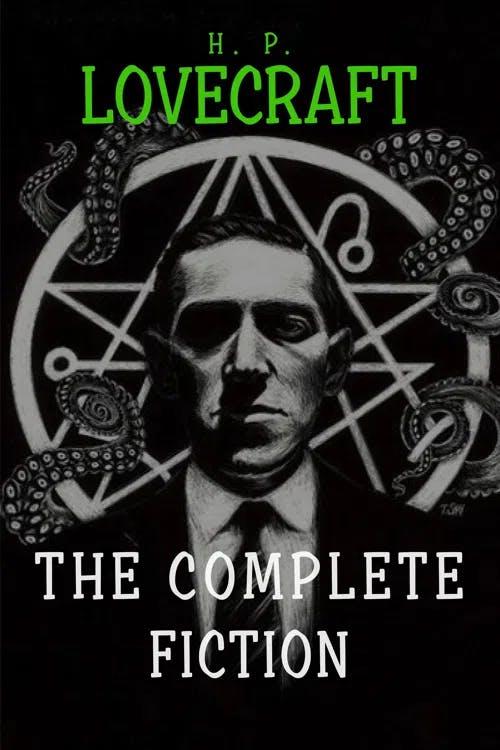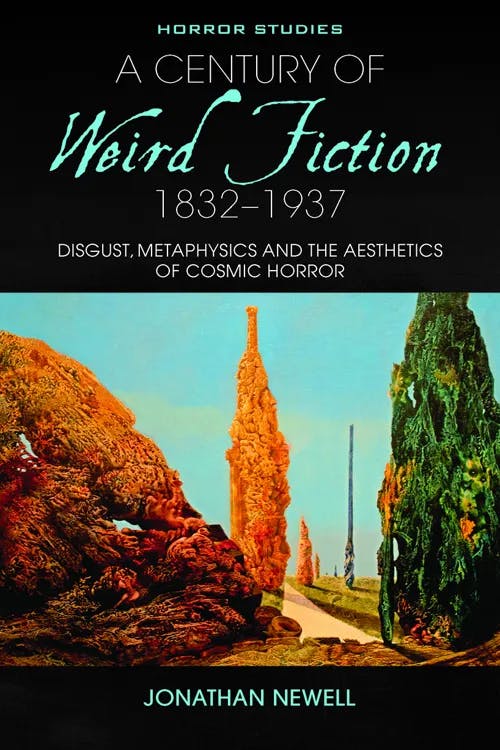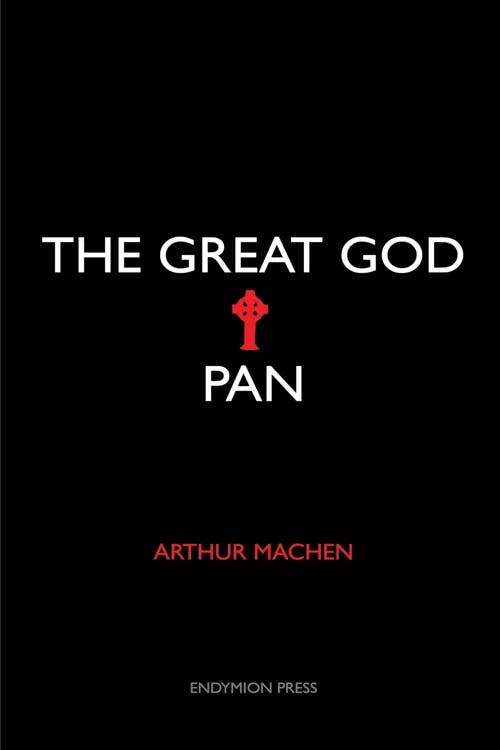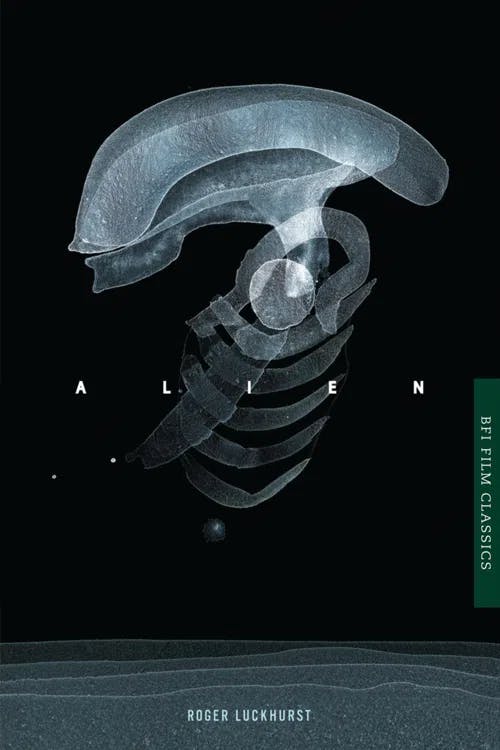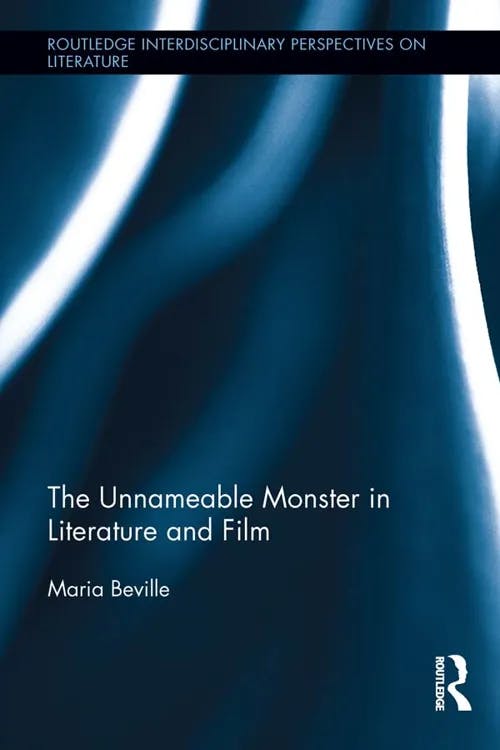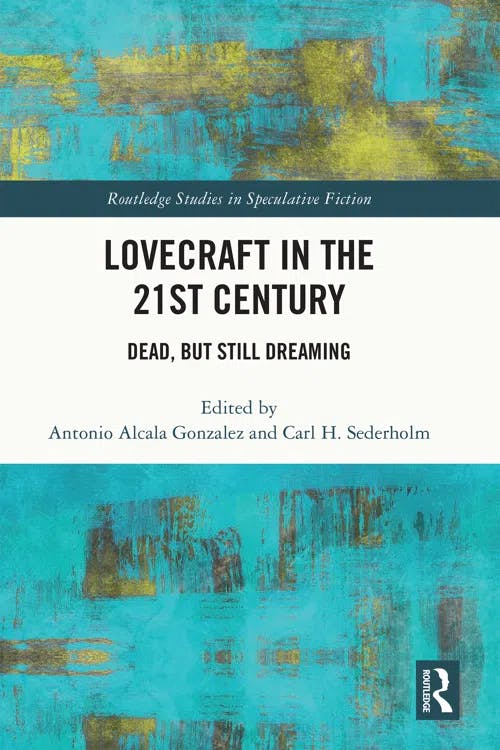What is Cosmic Horror?
PhD, English Literature (Lancaster University)
Date Published: 20.02.2024,
Last Updated: 20.02.2024
Share this article
Defining cosmic horror
The oldest and strongest emotion of mankind is fear, and the oldest and strongest kind of fear is fear of the unknown.
(H. P. Lovecraft, “Supernatural horror in literature,” In the Mind of H. P. Lovecraft, 1927, [2020])
H. P. Lovecraft
The oldest and strongest emotion of mankind is fear, and the oldest and strongest kind of fear is fear of the unknown.
(H. P. Lovecraft, “Supernatural horror in literature,” In the Mind of H. P. Lovecraft, 1927, [2020])
Cosmic horror (sometimes referred to as “Lovecraftian horror” or “eldritch horror”) emphasizes the fear of the unknown; as characters attempt to comprehend the vastness and complexity of the universe, they are left questioning humanity’s relative insignificance and fragility. In his seminal essay “Supernatural horror in literature,” weird fiction writer H. P. Lovecraft explains how cosmic fear is primal:
The unknown, being likewise the unpredictable, became for our primitive forefathers a terrible and omnipotent source of boons and calamities visited upon mankind for cryptic and wholly extra-terrestrial reasons, and thus clearly belonging to spheres of existence whereof we know nothing and wherein we have no part. (1927, [2020])
This subgenre is heavily rooted in existentialism, nihilism, and cosmicism. Cosmicism, a literary philosophical theory developed by Lovecraft, states that there is no recognizable divine presence and that humans are insignificant relative to the universe. This concept is prevalent in cosmic fiction, even in works that predate Lovecraft’s.
Aside from Lovecraft, some of the most notable cosmic horror writers include William Hope Hodgson, Algernon Blackwood, and Arthur Machen. This guide will explore the origins of cosmic horror, the common themes and tropes within the subgenre, and its translation to the screen.
Cosmic horror and the sublime
Though Lovecraft is often the name most associated with cosmic horror, it is worth noting that the subgenre existed almost a decade before Lovecraft’s work. As Jess Nevins explains,
Lovecraft was a popularizer of cosmic horror; he was an advancer and promoter of it. He was crucial to its evolution, but he was not its creator. (2020)
Jess Nevins
Lovecraft was a popularizer of cosmic horror; he was an advancer and promoter of it. He was crucial to its evolution, but he was not its creator. (2020)
In “The Birth of Cosmic Horror from the S(ub)lime of Lucretius,” Sean Moreland traces the genealogy of the term “cosmic horror” (in New Directions in Supernatural Horror Literature, 2018). As Moreland explains, the Enlightenment (an intellectual movement towards reason in the seventeenth and eighteenth centuries) produced a range of texts “about the affective intensity evoked by the scalar abysses of the world viewed through the complementary lenses of the microscope and telescope” (2018). Though this period focused on rationality and scientific reason, the revelations that came with this — particularly the concept of the universe being a vast and unknowable space — produced feelings of both terror and awe. This emotive response to the incomprehensibility of the universe and nature is known as “the sublime.”
Examples of earlier uses of the sublime, cited by Moreland, are John Mason Good’s The Book of Nature (1826), in which Good comments on the minuteness of our world and humankind in relation to the “immensity of space.” We can also see how cosmic horror develops from the concept explored by William Kingdon Clifford in his 1877 essay “The Cosmic Emotion”:
There are two kinds of cosmic emotion—one having reference to the Macrocosm or universe surrounding and containing us, the other relating to the Microcosm or universe of our own souls. When we try to put together the most general conceptions that we can form about the great aggregate of events that are always going on, to strike a sort of balance among the feelings which these events produce in us, and to add to these the feeling of vastness associated with an attempt to represent the whole of existence, then we experience a cosmic emotion of the first kind. It may have the character of awe, veneration, resignation, submission; or it may be an overpowering stimulus to action. (Lectures and Essays, 1879, [2011])
Clifford’s ideas were later developed by theologian George M. Gould in the mid-1890s:
I have learned that many another sensitive despairing soul, in the face of the glib creeds and the loneliness of subjectivity, has also and often felt the same clutching spasm of cosmic horror, the very heart of life stifled and stilled with an infinite fear and sense of lostness. (1893, quoted in Moreland, 2018)
Edited by Sean Moreland
I have learned that many another sensitive despairing soul, in the face of the glib creeds and the loneliness of subjectivity, has also and often felt the same clutching spasm of cosmic horror, the very heart of life stifled and stilled with an infinite fear and sense of lostness. (1893, quoted in Moreland, 2018)
We can, therefore, see a shift from the early Enlightenment to the late Victorian era in accounts of the sublime:
In this turn, horror, a paralyzing affect marked by a freezing sensation, one often occasioned by the vastness and unknowability of the universe, is melted into a sensation of awesome elevation, usually by a theistic intimation of our privileged position within that universe. (Moreland, 2018)
New perceptions of the universe thus created a fresh source of terror that manifested in horror and science fiction.
These new fears of the universe can be observed in the work of Algernon Blackwood, a prolific cosmic horror writer whom Lovecraft described as having produced “some of the finest spectral literature of this or any age” (1927, [2020]). Blackwood’s works, as we will go on to see, explore the sublime (particularly elemental forces) as a source of terror.
Like Blackwood, Lovecraft used the sublime to evoke fear in his readers:
Lovecraft re-evaluates traditional notions of the sublime by locating the sublime in an external site: the cosmos. This location is, despite its vast and unknowable expanses and its innate unknowability, assumed to be an organised empyrean system. The term ‘cosmic horror’ as used by the writer himself implies a horror that is immeasurably large and part of a cosmic system that is both beyond and outside the earth as we know it. (2013)
Maria Beville
Lovecraft re-evaluates traditional notions of the sublime by locating the sublime in an external site: the cosmos. This location is, despite its vast and unknowable expanses and its innate unknowability, assumed to be an organised empyrean system. The term ‘cosmic horror’ as used by the writer himself implies a horror that is immeasurably large and part of a cosmic system that is both beyond and outside the earth as we know it. (2013)
Nevins explains that Lovecraft was the first to use the concepts present in cosmic horror “as the underpinning and guiding philosophy in his stories” and to
[...] advance cosmic horror beyond stories of an inimical universe—a simple and predictable reversal of the traditional horror literature moral cosmology—into scientifically justified and supported stories of an uncaring universe in which humans, frighteningly, discover their true nature in the cosmos: irrelevancy. (2020)
Tropes and themes of cosmic horror
Despite cosmic horror’s broad oeuvre, certain tropes and themes are common within the genre. This section will go on to explore what has typically remained consistent in cosmic horror.
The unknowable and the unnameable
In cosmic horror, the characters are often faced with an unknowable and awesome entity that is antagonistic towards, or indifferent to, humanity. Such entities are often unnameable (hence Lovecraft’s 1923 short story “The Unnamable”). One of the best examples of this is Cthulhu, a figure in Lovecraft’s pantheon of cosmic entities, created in his short story “The Call of Cthulhu” (1928, in H. P. Lovecraft: The Complete Fiction, [2020]). As Martin Hauberg-Lund Laugesen writes,
the ancient, nonhuman forces of the universe itself, personified by the mythic figure of Cthulhu [...] are, at best, indifferent to but most often directly hostile towards human beings and their petty ends. (“Insanity,” in Dark Pedagogy, 2019)
Edited by Jonas Andreasen Lysgaard, Stefan Bengtsson, and Martin Hauberg-Lund Laugesen
the ancient, nonhuman forces of the universe itself, personified by the mythic figure of Cthulhu [...] are, at best, indifferent to but most often directly hostile towards human beings and their petty ends. (“Insanity,” in Dark Pedagogy, 2019)
Laugesen continues,
In Lovecraft’s mythological lore this notion of the cosmically indifferent world without us is allegorically represented by the cosmic deities that populate his many writings. Cthulhu, being the highest-ranking god in the mythos, epitomizes the indifference of reality towards human beings’ endeavours. (2019)
This cosmic entity is also represented by the elemental forces in the work of Blackwood. The Willows (1907, [2004]), in particular, demonstrates the fear that can arise from an indifferent and unconquerable entity.
The Willows follows a narrator and his companion (known as “the Swede”) as they canoe down the River Danube and happen upon a place known as “Sumpfe” (meaning marshes). They refer to this space as “the willows.” Whilst they are camped in the willows, the narrator and the Swede begin to witness supernatural beings and wonder whether these creatures are malevolent or indifferent to their existence:
these beings who are now about us have absolutely nothing to do with mankind, and it is mere chance that their space happens just at this spot to touch our own. (1907, [2004])
Algernon Blackwood
these beings who are now about us have absolutely nothing to do with mankind, and it is mere chance that their space happens just at this spot to touch our own. (1907, [2004])
Similarly, William Hope Hodgson’s classic The House on the Borderland (1908) includes creatures that evade comprehension. In this text, two men in Ireland discover a manuscript in an abyss where a house once stood; the manuscript details the supernatural experiences of the recluse who used to live in the house. The recluse describes encountering otherworldly creatures:
there were hundreds of them. They seemed to grow out of the shadows. Several I recognized almost immediately as mythological deities; others were strange to me, utterly strange, beyond the power of a human mind to conceive. (Hodgson, 1908, [2003])
William Hope Hodgson
there were hundreds of them. They seemed to grow out of the shadows. Several I recognized almost immediately as mythological deities; others were strange to me, utterly strange, beyond the power of a human mind to conceive. (Hodgson, 1908, [2003])
Forbidden quest for knowledge
In cosmic horror, the main character will typically seek out forbidden knowledge beyond the reach of science. As Laugesen states,
At the end of the day, the way of science and the laborious work of scientists can only get us so far when what we are dealing with is the innermost truths about the nature of reality, i.e. the world-without-us. (2019)
As science is limited, characters in cosmic horror seek out forbidden sources of knowledge from monstrous and dangerous sources.
In cosmic horror, the successful outcome of finding out the truth is a descent into a state of despair, detachment, and ultimately madness. For Lovecraft, our ignorance of the enormity and complexity of the universe is in many ways a blessing. As he writes in “The Call of Cthulhu,”
The most merciful thing in the world, I think, is the inability of the human mind to correlate all its contents. We live on a placid island of ignorance in the midst of black seas of infinity, and it was not meant that we should voyage far. The sciences, each straining in its own direction, have hitherto harmed us little; but some day the piecing together of dissociated knowledge will open up such terrifying vistas of reality, and of our frightful position therein, that we shall either go mad from the revelation or flee from the deadly light into the peace and safety of a new dark age. (1928, [2020])
H. P. Lovecraft
The most merciful thing in the world, I think, is the inability of the human mind to correlate all its contents. We live on a placid island of ignorance in the midst of black seas of infinity, and it was not meant that we should voyage far. The sciences, each straining in its own direction, have hitherto harmed us little; but some day the piecing together of dissociated knowledge will open up such terrifying vistas of reality, and of our frightful position therein, that we shall either go mad from the revelation or flee from the deadly light into the peace and safety of a new dark age. (1928, [2020])
Nihilism
Nihilism, the belief that life is meaningless, is dealt with in various cosmic horror texts. Here, the universe is often seen as being indifferent to humanity, and the characters experience terror when confronted with its vastness. This is what Eugene Thacker describes as “cosmic pessimism” (Cosmic Pessimism, 2015). This pessimism can be seen, as Thacker directs us, in one of Lovecraft’s letters to Farnsworth Wright (editor of Weird Tales magazine) in which he states “all my tales are based on the fundamental premise that common human laws and interests are emotions [that] have no validity or significance in the vast cosmos-at-large” (Lovecraft, 1927, quoted in Thacker, 2015).
In Lovecraft’s novella, The Shadow Out of Time (1936), university professor Nathan Wingate Peaslee reckons with humanity’s place in the universe when his body is inhabited by an alien from an ancient civilization. Upon realizing this, Peaslee nihilistically remarks
If that abyss and what it held were real, there is no hope. Then, all too truly, there lies upon this world of man a mocking and incredible shadow out of time. (Lovecraft, 1936, in H. P. Lovecraft: The Complete Collection, 2020)
Feelings of detachment and isolation
Often, characters in cosmic horror experience feelings of detachment from themselves and others. Returning to The Shadow Out of Time, when Peaslee begins to have visions of the alien creatures, he finds his body strange and unfamiliar:
I developed a queer fear of seeing my own form, as if my eyes would find it something utterly alien and inconceivably abhorrent. When I did glance down and behold the familiar human shape in quiet grey or blue clothing I always felt a curious relief, though in order to gain this relief I had to conquer an infinite dread. (Lovecraft, 1936, [2020])
Encounters with the unfamiliar and otherworldly also give rise to feelings of isolation. In Blackwood’s work, in particular, we see elemental forces creating a sense of abandonment and isolation in the world. In The Willows, for example, the narrator states,
We entered the land of desolation on wings, and in less than half an hour there was neither boat nor fishing-hut nor red roof, nor any single sign of human habitation and civilization within sight. (Blackwood, 1907, [2004])
Throughout the text, the narrator describes the “remoteness from the world of mankind,” feelings of “isolation,” and a highly personified landscape. As Jonathan Newell writes,
The willows and the Sümpfe as a whole are anomalous, cosmic, unearthly. It is not, precisely, that they are not part of Nature. [...] Rather than conforming to the natural/ supernatural distinction common to the gothic, the willows enlarge and unsettle the very notion of the ‘natural’. Blackwood’s descriptions of the Sümpfe emphasise its remoteness from humanity, its total otherness. (2020)
Jonathan Newell
The willows and the Sümpfe as a whole are anomalous, cosmic, unearthly. It is not, precisely, that they are not part of Nature. [...] Rather than conforming to the natural/ supernatural distinction common to the gothic, the willows enlarge and unsettle the very notion of the ‘natural’. Blackwood’s descriptions of the Sümpfe emphasise its remoteness from humanity, its total otherness. (2020)
These isolated landscapes emphasize humanity’s powerlessness in the face of supernatural forces and cosmic entities.
Insanity
Cosmic horror engages with a very specific kind of madness: the type that one faces when confronted with an irreconcilable and terrible truth about humanity, the universe, and one's place within it. Arthur Machen’s The Great God Pan (1890, [2018]) is a prime example of the insanity that can be induced by cosmic forces. The text begins with an experiment conducted by Dr. Raymond on a woman called Mary, to enable her to see into the supernatural realm. Mary awakens from the experiment terrified and in awe, having seen the great god Pan. One of the characters, Villiers, later states
We know what happened to those who chanced to meet the Great God Pan, and those who are wise know that all symbols are symbols of something, not of nothing. It was, indeed, an exquisite symbol beneath which men long ago veiled their knowledge of the most awful, most secret forces which lie at the heart of all things; forces before which the souls of men must wither and die and blacken, as their bodies blacken under the electric current. (Machen, 1890, [2018])
Arthur Machen
We know what happened to those who chanced to meet the Great God Pan, and those who are wise know that all symbols are symbols of something, not of nothing. It was, indeed, an exquisite symbol beneath which men long ago veiled their knowledge of the most awful, most secret forces which lie at the heart of all things; forces before which the souls of men must wither and die and blacken, as their bodies blacken under the electric current. (Machen, 1890, [2018])
According to Nevins, Lovecraft transformed the trope of knowledge driving a person to madness into “an articulated philosophy” (2020). As Brad Tabas writes,
In Lovecraft it is never madness that engenders the experience of the real, but rather the encounter with the real that provokes fits of madness. Madness is thus the testament and seal of having experienced the real. (“Dark Places: Ecology, Place, and the Metaphysics of Horror Fiction,” 2015)
In essence, the only thing protecting our sanity is ignorance, our lack of awareness of the possibility of other realities or species in the universe. The vastness of the universe and the concept of infinity that Lovecraft references is often beyond human comprehension. This realization of the enormity of the universe, of our insignificance in comparison, and of our great ignorance, leads to feelings of uncertainty and terror.
In “The Call of Cthulhu,” encounters with the eponymous eldritch being can invoke insanity:
Of the six men who never reached the ship, he thinks two perished of pure fright in that accursed instant. The Thing cannot be described—there is no language for such abysms of shrieking and immemorial lunacy, such eldritch contradictions of all matter, force, and cosmic order. A mountain walked or stumbled. God! What wonder that across the earth a great architect went mad, and poor Wilcox raved with fever in that telepathic instant? (Lovecraft, 1928, [2020])
Seeing such unfathomable beings in the age of science and reason leaves characters questioning what they know about the world, as their concept of reality is overturned.
Cosmic horror on screen
Cosmic horror has found a place on screen in science fiction and horror classics, from John Carpenter’s The Thing (1982) to more recent releases like Knock at the Cabin (M. Night Shyamalan, 2023). It is worth taking a moment to explore some of these key examples of cosmic horror in cinema.
The Thing is perhaps one of the most well-known cosmic horror films to date. Carpenter’s film follows a research team in Antarctica as they are hunted by a shapeshifting, extraterrestrial lifeform. Set in a desolate landscape, the characters lose their identity as their bodies are assumed by an unnatural force. In addition, the characters must contend with the reality of the powerlessness of humanity in the face of an unknowable cosmic force.
Another classic cosmic horror is Ridley Scott’s Alien (1979), which follows a crew on a spacecraft as they are attacked by an alien. This science fiction film takes inspiration from Lovecraft, drawing upon many of the conventions of cosmic horror. As Roger Luckhurst writes in Alien (2019), the film is “an early harbinger of the extraordinary revival of Lovecraft's particular take on biological body horror in modern Gothic/science-fiction fusions.” Luckhurst goes on to state that the Alien franchise
pulls into the orbit of the films Lovecraft's powerful philosophy of 'cosmic indifferentism', devolutionary fantasies and slime dynamics that are thoroughly Darwinian, materialistic and historical. (2019)
Roger Luckhurst
pulls into the orbit of the films Lovecraft's powerful philosophy of 'cosmic indifferentism', devolutionary fantasies and slime dynamics that are thoroughly Darwinian, materialistic and historical. (2019)
We can see this unnameable entity in Frank Darabont’s 2007 film The Mist (based on Stephen King’s novella of the same name). Here, a group of locals are trapped in a supermarket when an ominous mist envelopes the town. Outside, the mist conceals ominous, unseen creatures. Beville explains how the otherness of the creatures compounds the viewers’ fear:
in The Mist, we see the ‘Thing’ solely from the diminutive position of the ant-like car as the group inside the vehicle waits terrified and awe-struck beneath its feet. The creature is so large that it does not even notice the car and its inhabitants. The encounter with its Otherness is therefore only possible from afar. [...] The ‘Thing’ in The Mist can only be defined by its perplexing vastness as the unearthly sounds of its roar suggest, echoing from the far off distance of its gigantic head high above the car. (2013)
Maria Beville
in The Mist, we see the ‘Thing’ solely from the diminutive position of the ant-like car as the group inside the vehicle waits terrified and awe-struck beneath its feet. The creature is so large that it does not even notice the car and its inhabitants. The encounter with its Otherness is therefore only possible from afar. [...] The ‘Thing’ in The Mist can only be defined by its perplexing vastness as the unearthly sounds of its roar suggest, echoing from the far off distance of its gigantic head high above the car. (2013)
The tropes of cosmic horror are utilized for darkly comic effect in The Cabin in the Woods (Drew Goddard, 2011). In this film, a group of teenagers go on a trip away and are picked off one-by-one as part of a ritual sacrifice to satisfy the Ancient Ones (deities who dwell underground).
Recent releases such as Knock at the Cabin (M. Night Shyamalan, 2023), an adaptation of the 2018 novel The Cabin at the End of the World by Paul Tremblay, continue to inspire terror by highlighting the fragility of human existence. In this work, the characters must make an impossible decision to avoid the obliteration of the entire human race by some unknown cosmic force.
The enduring appeal of cosmic horror
As well as the aforementioned cosmic horror films, the subgenre has flourished in a range of different mediums in the twenty-first century, from television series such as Lovecraft Country (Green, 2020) and video games like Bloodborne (2015), to collectable card games such as Magic the Gathering (MTG, 1993–). The subgenre continues to flourish in contemporary literature with texts such as Victor LaValle’s The Ballad of Black Tom (2016) and N. K. Jemisin’s The City We Became (2020).
So what is it about cosmic horror that resonates with modern audiences and readers? As Elisabete Lopes writes,
the world has become overwhelmed by so many “unthinkable” things that the Lovecraftian term “weird” would seem appropriate to describe its constantly changing nature. In truth, the world is being haunted by global specters, such as the scarcity of resources, environmental disasters, overpopulation, racism and intolerance, and devastating pandemics. [...] Thus, because humanity is increasingly haunted by the shadow of cosmic horror, the growing popularity of H.P. Lovecraft in contemporary times does not seem so strange after all. (“Lovecraftian Landscapes and Cosmic Horror in HBO’s True Detective,” Lovecraft in the 21st Century, 2021)
Edited by Antonio Alcala Gonzalez and Carl H. Sederholm
the world has become overwhelmed by so many “unthinkable” things that the Lovecraftian term “weird” would seem appropriate to describe its constantly changing nature. In truth, the world is being haunted by global specters, such as the scarcity of resources, environmental disasters, overpopulation, racism and intolerance, and devastating pandemics. [...] Thus, because humanity is increasingly haunted by the shadow of cosmic horror, the growing popularity of H.P. Lovecraft in contemporary times does not seem so strange after all. (“Lovecraftian Landscapes and Cosmic Horror in HBO’s True Detective,” Lovecraft in the 21st Century, 2021)
In other words, because of the existential threats caused by climate change, and the devastation wrought by social, political, and economic issues, cosmic horror seems more relevant than ever. Cosmic horror resonates with readers’ feelings of insignificance or helplessness when faced with such looming specters. This subgenre offers a lens through which to confront our collective fears and anxieties about the modern world and its future. Cosmic horror continues to be a potent reminder of the vulnerability of human existence and the possibility of encountering the unknown in our vast and incomprehensible universe.
Further reading on Perlego
H.P. Lovecraft: An Evaluation (2023) by Joseph Payne Brennan
Lovecraft: Disturbing the Universe (2021) by Donald R. Burleson
The Philosophy of Horror Or, Paradoxes of the Heart (2003) by Noel Carroll
Weird Fiction in Britain 1880–1939 (2018) by James Machin
What is cosmic horror in simple terms?
What is an example of cosmic horror?
Who are some key cosmic horror writers?
What are the main themes of cosmic horror?
Bibliography
Beville, M. (2013) The Unnameable Monster in Literature and Film. Routledge. Available at: https://www.perlego.com/book/1678445/the-unnameable-monster-in-literature-and-film
Blackwood, A. (2004) The Willows. Perlego. Available at: https://www.perlego.com/book/1822552/the-willows
Good, J. M. (1826) The Book of Nature. Longman, Rees, Orme, Brown, and Green.
Hodgson, W. H. (2003) The House on the Borderland. Perlego. Available at: https://www.perlego.com/book/1843040/the-house-on-the-borderland
Jemisin, N. K. (2020) The City We Became. Hachette Book Group.
Laugesen, M. H. (2019)“Insanity,” in Lysgaard, J. A., Bengtsson, S., and Laugesen, M. H. (eds.) Dark Pedagogy: Education, Horror and the Anthropocene. Palgrave Pivot. Available at:
https://www.perlego.com/book/3493246/dark-pedagogy-education-horror-and-the-anthropocene
LaValle, V. (2016) The Ballad of Black Tom. Macmillan.
Lopes, E. (2021) “Lovecraftian Landscapes and Cosmic Horror in HBO’s True Detective,” in Alcala Gonzalez, A. and Sederholm, C. H. (eds.) Lovecraft in the 21st Century: Dead but Still Dreaming. Routledge. Available at: https://www.perlego.com/book/3118240/lovecraft-in-the-21st-century-dead-but-still-dreaming
Lovecraft, H. P. (2020) “Supernatural horror in literature,” in In the Mind of H. P. Lovecraft: A Collection of Essays. Read & Co. Great Essays. Available at: https://www.perlego.com/book/1484446/in-the-mind-of-h-p-lovecraft
Lovecraft, H. P. (2020) “The Call of Cthulhu” in H. P. Lovecraft: The Complete Fiction. HPLovecraft. Available at: https://www.perlego.com/book/2723059/h-p-lovecraft-the-complete-fiction
Lovecraft, H. P. (2020) The Shadow Out of Time in H. P. Lovecraft: The Complete Fiction. HPLovecraft. Available at:
https://www.perlego.com/book/2723059/h-p-lovecraft-the-complete-fiction
Machen, A. (2018) The Great God Pan. Endymion Press. Available at: https://www.perlego.com/book/1886365/the-great-god-pan
Moreland, S. (ed.) (2018) New Directions in Supernatural Horror Literature: The Critical Influence of H. P. Lovecraft. Palgrave Macmillan. Available at: https://www.perlego.com/book/3491055/new-directions-in-supernatural-horror-literature-the-critical-influence-of-h-p-lovecraft
Nevins, J. (2020) Horror Fiction in the 20th Century: Exploring Literature’s Most Chilling Genre. Praeger. Available at: https://www.perlego.com/book/4169791/horror-fiction-in-the-20th-century-exploring-literatures-most-chilling-genre
Newell, J. (2020) A Century of Weird Fiction, 1832-1937: Disgust, Metaphysics and the Aesthetics of Cosmic Horror. University of Wales Press. Available at: https://www.perlego.com/book/1433282/a-century-of-weird-fiction-18321937-disgust-metaphysics-and-the-aesthetics-of-cosmic-horror
Tabas, B. (2015) “Dark Places: Ecology, Place, and the Metaphysics of Horror Fiction,” Miranda, 11.
Thacker, E. (2015) Cosmic Pessimism. University of Minnesota Press.
Film and other media
Alien (1979) Directed by Ridley Scott. Twentieth Century Studios.
Bloodborne (2015) Developed by Sony Interactive Entertainment Europe.
The Cabin in the Woods (2011) Directed by Drew Goddard. Lionsgate.
Knock at the Cabin (2023) Directed by M. Night Shyamalan. Universal Pictures.
Lovecraft Country (2020) Directed by Misha Green.
Magic the Gathering (MTG, 1993–) Published by Wizards of the Coast.
The Mist (2007) Directed by Frank Darabont. Metro-Goldwyn-Mayer and Dimension Films.
The Thing (1982) Directed by John Carpenter. Universal Pictures.
PhD, English Literature (Lancaster University)
Sophie Raine has a PhD from Lancaster University. Her work focuses on penny dreadfuls and urban spaces. Her previous publications have been featured in VPFA (2019; 2022) and the Palgrave Handbook for Steam Age Gothic (2021) and her co-edited collection Penny Dreadfuls and the Gothic was released in 2023 with University of Wales Press.

